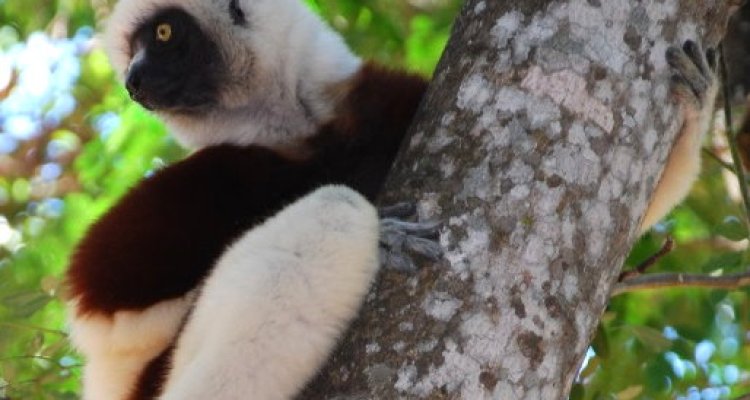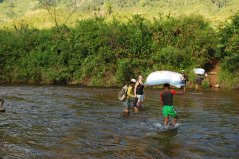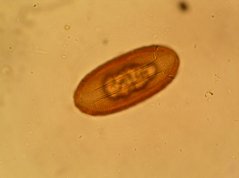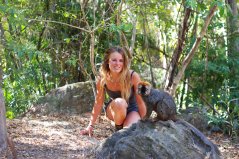
Project
Habitat disturbance and primate health
Iris de Winter studies the effects of multiple ecological, behavioural and environmental determinants of parasite prevalence in a wild primate species: lemurs. The infectious diseases play a primary role in ecological, social and evolutionary processes, but only little is known about the potential drivers of parasitic loads.
Project description
Parasite prevalence in wildlife: the effect of anthropogenic disturbances and environmental, ecological and physiological factors from a multi-scale perspective.
Parasite prevalence in lemursHabitat disturbance and individual characteristics as explaining factors
Parasite prevalence and associated infectious diseases play an important role in ecological, social and evolutionary processes, but the potential drivers of parasitic loads are still unclear. However, habitat disturbance, seasonality as well as several individual characteristics has been shown to be associated with higher parasite prevalence in several animal species. This study aims to explore the mechanisms and determinants of gastrointestinal parasite infections in prosimian primates. Methods included the non-invasive sampling of faecal samples from our model species: three congeneric lemur species that are endemic to Madagascar (Eulemur rufifrons. E. fulvus and E. rubriventer). Faecal samples of individual lemurs are screened for eggs and larvae of gastrointestinal parasites. We generally find two species of parasites that are considered as genuine parasites of these Eulemur sp.: Callistoura sp. and Lemuricola sp.. Currently, a significantly higher prevalence of these parasites was found in lemurs ranging in pristine areas compared to those ranging in more disturbed areas. In addition, adult individuals show higher Callistoura prevalence compared to sub-adults. In terms of sex we find contrasting results, with males showing a higher prevalence of Lemuricola infections compared to females. In contrast, females are more heavily infected with Callistoura parasites than males. In the next field season the aim is to explore these differences by focussing on the different life cycles and transmission modes of the parasite species we found, in combination with including seasonal and geographic contrasts in our model. The association between parasite prevalence and reduced host fitness, combined with the parasites' potential to spread infectious diseases among wildlife and human populations, underlines the importance of this project from an anthropological, ecological, and a conservation perspective.
MSc Students involved
Field season 1
- Bas van der Hoek (WU): “Variations in forest structure and composition following different intensities of anthropogenic use in Ranomafana National Park, Madagascar”
- Sjoerd Schimmel (WU): “Parasite transmission between domestic animals and lemur hosts in Madagascar”
- Jolien Marcus (UU): “Parasite infections in lemurs on Madagascar: The effect of human disturbance on the prevalence and diversity of gastro-intestinal parasites in the red-fronted brown lemur (Eulemur rufifrons)”
- Krishnah Cynthi (UoA): “The effect of light intensity on lemur activity patterns”
Field season 2
- Niels Kil (WU): “Disturbance effects on lemur parasites”
- Janna Jillesen (WU): “Disturbance effects, including rat infestation, on lemur parasites”
- Nicky Stegenga (WU): “The effect of climatic variation on lemur parasites”
- Andrianandrasanarivelo RAKOTOSOLOFO (UoA): To be considered





